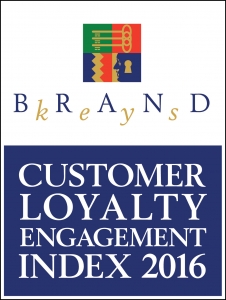
Emotional engagement – a leading-indicator of consumer behavior, loyalty, sales, and profits – is more difficult for brands to achieve than ever before. The key drivers of brand engagement have shifted dramatically toward emotional values in 88% of the 72 categories surveyed in Brand Keys’ 2016 Customer Loyalty Engagement Index® (CLEI), our 21st annual survey.
Rational stuff is price-of-entry, and emotional values are more problematic for brands. It’s not the brand outreach or messaging. That’s the easy part. How to accurately identify which emotional values a brand should leverage, that’s an entirely different challenge. Imagery and – what many marketers mistake for engagement – are so vastly different from real emotional engagement, it’s not only hard to describe, it’s really not funny!
So seriously, for 2016 we interviewed 42,792 consumers (18 to 65) from the nine US Census Regions, and they self-selected categories in which they are consumers, and the brands for which they are top-20% customers. Seventy percent were interviewed by phone, 25% percent via face-to-face interviews (We did that so we didn’t exclude cellphone-only households. Bragging Rights: we were the first research company to do that back in 2007 when that group was less than 5% of the population. How times have changed. Along with consumer and category values!), and 5% online to backfill category and brand quotas. This year, the 10 categories with the highest expectations for emotional values (in parentheses) – and the brands consumers assessed as best meeting those values – included the following:
- Athletic Footwear: New Balance/Nike (Personal Innovation & Success)
- Automotive: Hyundai/Ford (My Life Is Always Connected Wherever I Go)
- Breakfast Bars: Kind/Kellogg’s Nutri-Grain (My Grab-n-Go Tasty Lifestyle)
- Fast Casual Restaurants: Panera/Shake Shack (Customization & Well-Being)
- Instant Messages: WhatsApp (Making My Impact)
- Online Retailers: Amazon (Immediate Gratification)
- Online Video: Netflix (Always Amused, Never Bored)
- Smartphones: Apple (I Can Do Anything Wherever I Am!)
- Social Networking: Facebook (Personal Connectivity & Real Influence)
- Whiskey: Jack Daniels (My Brand Is Me)
For a complete listing of the 72 categories and the brands that best emotionally engaged loyal consumers, go to: https://brandkeys.com/portfolio/customer-loyalty-engagement-index
What were those brands’ secrets? Well, primarily they recognize the fact that marketers who can increase brand engagement levels always see positive consumer behavior in the marketplace. Always. But to succeed at that, marketers need to accurately answer these three questions:
1) What drives my category,
2) What are the emotional engagement values I need to focus on, and
3) How can my brand exceed consumer expectations for those values?
“Easy peasy,” you say? Alas, most brands can’t. The real marketplace proves it. Eighty-three (83) new brands showed up in the survey year. That nearly 14% new brands that consumers are using at statistically generalizable rates. An increased number of brands appearing in consumers’ consideration sets confirm category volatility. And brands that aren’t emotionally engaging consumers are going to face a whole new competitive set. When consumers mention new brands at significant levels, it’s an indicator that current options are not meeting their expectations. When that happens, consumers look to new brands to do that. You really don’t want that to happen to you.
Methodology
Brand Keys uses independently validated research that fuses emotional and rational aspects of individual categories. The technique is a combination of psychological inquiry and higher-order statistical analyses, has a test/re-test reliability of 0.93, and provides results generalizable at the 95% confidence level. It has been successfully used in B2B and B2C categories in 35 countries. Oh, and they’ve been independently validated to correlate very, very highly with positive consumer behavior and, axiomatically, sales and profitability.
The output identifies 4 behavioral drivers for the category-specific ‘Ideal,’ and the emotional and rational values (and their percent-contribution to engagement) that form the components of each driver. Drivers – and component values – are category-specific since consumers don’t buy smartphones the same way they buy cosmetics or pizza. Our assessments measure how well brands meet expectations that consumers hold for each driver in their categories.
For more information about these validated and predictive emotional engagement and loyalty-based assessments, contact Leigh Benatar at leighb@brandkeys.com or call 212-532-6028. Or watch a video of the methodology on our YouTube channel: https://www.youtube.com/user/key2loyalty
Find out more about what makes customer loyalty happen and how Brand Keys metrics is able to predict future consumer behavior: brandkeys.com. Visit our YouTube channel to learn more about Brand Keys methodology, applications and case studies.
Share this: